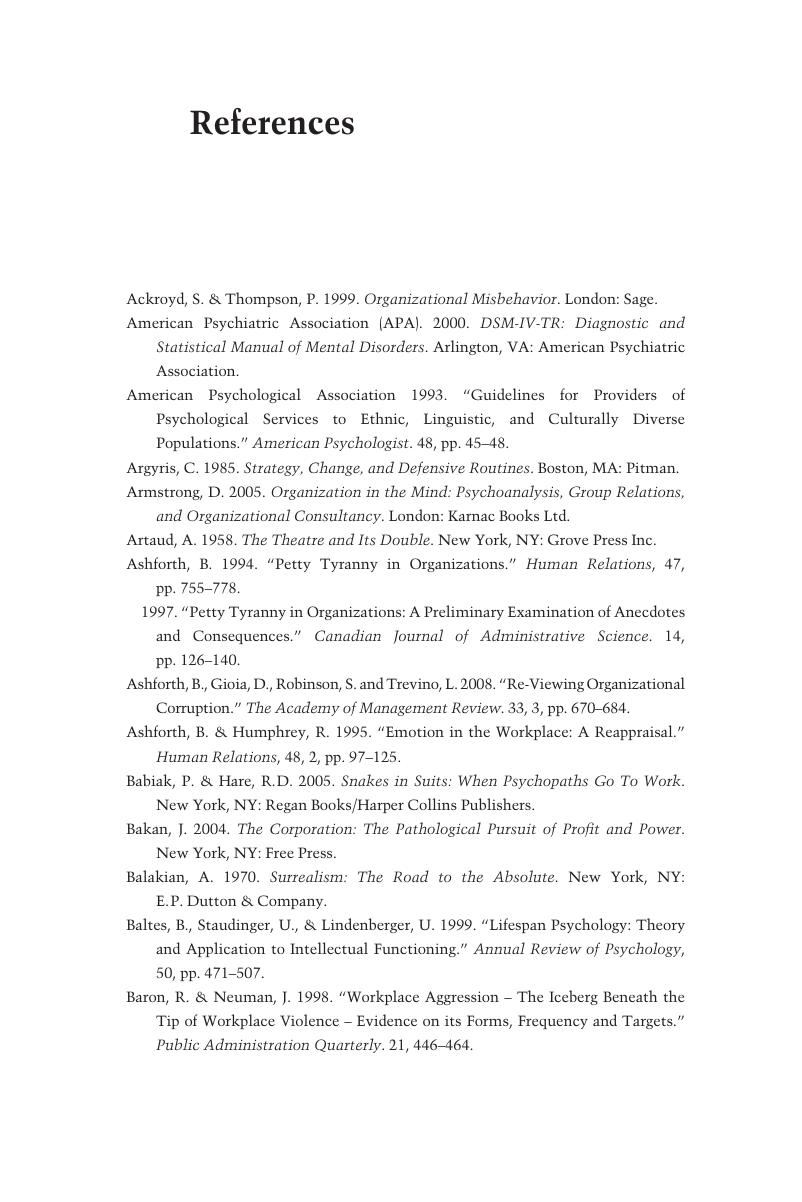Book contents
- Frontmatter
- Contents
- Preface
- Introduction: leaders and organizations in search of treatment
- 1 Hubris and narcissism: the dark underbelly of leadership
- 2 The enigma of an unintentionally toxic leader: an emotionally turbulent, destructive and impulsive workplace
- 3 The narcissistic leader: world-renowned and quite arrogant
- 4 Leader sabotage and the dysfunctional organization: the fish rots from the head down
- 5 The obsessive compulsive leader: a manager's mandate for perfection or destruction
- 6 The borderline leader: when brilliance and psychopathology coexist
- 7 Trouble at the top: high-toxicity implications of a leader with antisocial personality disorder
- 8 Histrionic leadership: the allure of the toxic leader in a volatile industry
- 9 The outer limits of toxic organizational behavior: corporate trauma in the form of disturbed leadership
- 10 Destructive leaders and dysfunctional organizations: tearing downs the walls of professional greed, hubris, toxic genius and psychopathology
- References
- Index
- References
References
Published online by Cambridge University Press: 25 January 2011
- Frontmatter
- Contents
- Preface
- Introduction: leaders and organizations in search of treatment
- 1 Hubris and narcissism: the dark underbelly of leadership
- 2 The enigma of an unintentionally toxic leader: an emotionally turbulent, destructive and impulsive workplace
- 3 The narcissistic leader: world-renowned and quite arrogant
- 4 Leader sabotage and the dysfunctional organization: the fish rots from the head down
- 5 The obsessive compulsive leader: a manager's mandate for perfection or destruction
- 6 The borderline leader: when brilliance and psychopathology coexist
- 7 Trouble at the top: high-toxicity implications of a leader with antisocial personality disorder
- 8 Histrionic leadership: the allure of the toxic leader in a volatile industry
- 9 The outer limits of toxic organizational behavior: corporate trauma in the form of disturbed leadership
- 10 Destructive leaders and dysfunctional organizations: tearing downs the walls of professional greed, hubris, toxic genius and psychopathology
- References
- Index
- References
Summary

- Type
- Chapter
- Information
- Destructive Leaders and Dysfunctional OrganizationsA Therapeutic Approach, pp. 199 - 209Publisher: Cambridge University PressPrint publication year: 2009



